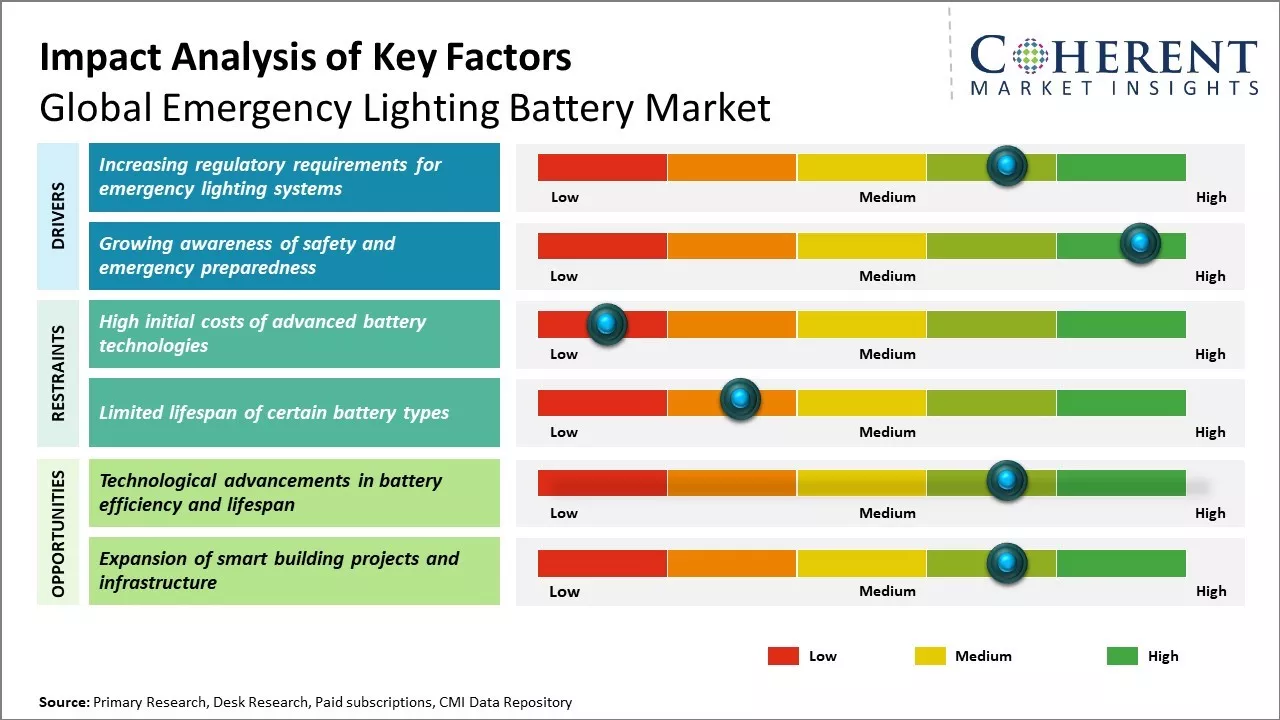Global emergency lighting battery market is estimated to be valued at US$ 6.88 Bn in 2025 and is expected to reach US$ 10.56 Bn by 2032, exhibiting a compound annual growth rate (CAGR) of 6.3% from 2025 to 2032.

To learn more about this report, Request sample copy
The Global Emergency Lighting Battery Market has been experiencing steady growth owing to stringent government regulations regarding implementation of emergency lighting systems across various industries.
Emergency lighting batteries are increasingly being adopted across industries such as oil & gas, healthcare, commercial buildings, and others due to mandatory fire and safety compliance protocols. Lithium-ion batteries have been gaining popularity as an efficient emergency lighting solution due to benefits such as high energy density, longer life, fast recharge time, and lower self-discharge rate when compared to traditional battery types. Advancing lithium-ion battery technologies, widening applications in critical infrastructure, and the need for robust emergency backup protocols during power outages are some key factors fueling growth in the global emergency lighting battery market.
Market Driver - Increasing regulatory requirements for emergency lighting systems
Strict government regulations surrounding workplace and building safety have driven increased adoption of emergency lighting systems globally. Most developed countries now have laws requiring specific types of facilities like hospitals, schools, commercial buildings and manufacturing plants to have emergency lighting installed. This is intended to ensure occupants can safely evacuate in the event of a power outage or fire. Emergency lighting allows staff to guide patients, students and visitors to exits even without main power. Harsher penalties for non-compliance have also motivated owners to upgrade their existing lights or install new battery-backed systems.
Government mandates often specify the number and location of emergency lights as well as minimum performance standards for luminance, operation duration and self-testing. For example, the National Fire Protection Association in the U.S. requires lights in exit corridors and exit stairwells to provide sufficient illumination for people to safely maneuver in an evacuation. The lighting must remain operational for at least 90 minutes from the time of a power failure. Similarly, the European Committee for Standardization' regulations demand that emergency lighting illuminate evacuation routes and fire equipment at all times. They also prescribe detailed tests to validate battery longevity and recharging ability.
Stricter safety laws have especially impacted high-risk sectors like energy facilities, factories, transportation hubs and large public venues that accommodate mass gatherings. The catastrophic consequences of system failure during emergencies in these environments have led authorities to tighten rules governing emergency power backup. Overall, the need for buildings and their occupants to be compliant with evolving safety norms has driven consistent investment in upgraded emergency lighting solutions with enhanced reliability.
Joining thousands of companies around the world committed to making the Excellent Business Solutions.
View All Our Clients